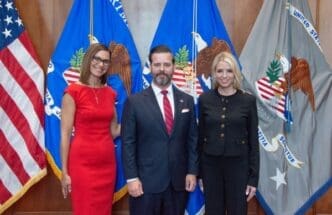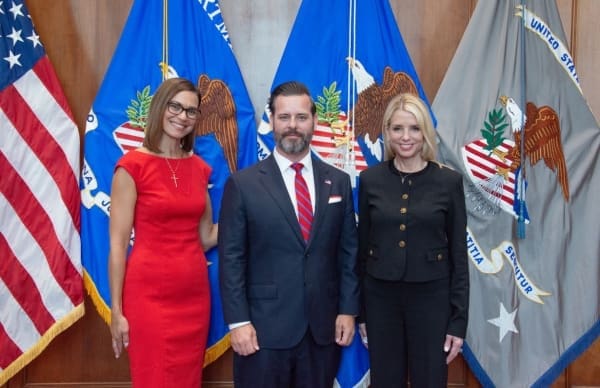A United States aircraft carrier has deployed a second vessel to the waters of the Middle East ahead of upcoming negotiations between Iran and the United States. These discussions will focus on Tehran’s rapidly advancing nuclear program. Satellite images analyzed recently revealed that the USS Carl Vinson and its strike group are operating in the Arabian Sea. Meanwhile, suspected U.S. airstrikes have targeted areas in Yemen controlled by Iran-backed Houthi rebels.
American officials have consistently linked the month-long U.S. campaign against the Houthis, conducted under President Donald Trump, with efforts to exert pressure on Iran during these negotiations. Uncertainty remains regarding the location of the upcoming weekend talks between the two nations, with initial reports suggesting Rome, only for Iran to insist on Oman as the venue. So far, U.S. authorities have not confirmed the talks’ location.
The stakes are high for both countries, which share a lengthy history of hostility. President Trump has frequently threatened targeted airstrikes on Iran’s nuclear facilities if an agreement is not reached. Iranian officials have increasingly warned of the potential pursuit of nuclear weapons with their enriched uranium reserves nearing weapons-grade levels.
The U.S. envoy for the Middle East, Steve Witkoff, who represented the United States in the previous weekend’s talks in Oman, hinted that the 2015 nuclear agreement, which President Trump unilaterally withdrew from in 2018, might serve as the basis for these negotiations. He described the recent discussions as positive and constructive, emphasizing verification of the enrichment program and potential weaponization, including missiles and bomb detonators.
The USS Vinson has joined the USS Harry S. Truman as the second U.S. aircraft carrier in the Middle East. Recent satellite images from the European Union’s Copernicus program captured the Vinson operating northeast of Socotra, an island near the Gulf of Aden entrance. Accompanying the Vinson are the guided-missile cruiser USS Princeton and two guided-missile destroyers, the USS Sterett and the USS William P. Lawrence.
The United States has directed the Vinson to the Middle East to support the USS Harry S. Truman, which has been launching airstrikes against the Houthis since the U.S. campaign began in mid-March. Navy-released images showed the Vinson preparing munitions and launching F-35 and F/A-18 fighter jets in recent days. The U.S. Navy’s 5th Fleet, based in Bahrain, declined to comment on the Vinson’s operations.
Meanwhile, Witkoff proposed a specific uranium enrichment level for Iran’s nuclear program. Currently, Iran enriches uranium up to 60 percent, a short technical step from weapons-grade levels at 90 percent. Witkoff asserted that enrichment should not exceed 3.67 percent, a provision outlined in the 2015 nuclear deal with world powers during President Barack Obama’s tenure. Under this agreement, Iran agreed to sharply limit its uranium reserves and enrichment levels in exchange for access to frozen assets and the lifting of sanctions on its oil industry and other sectors.
An editorial in Iran’s Javan newspaper, affiliated with its paramilitary Revolutionary Guard, suggested that Tehran might be open to reducing its enrichment levels, questioning why Iran shouldn’t reach an agreement when it has previously done so. However, in withdrawing from the agreement in 2018, Trump cited Iran’s ballistic missile arsenal as a reason for abandoning the deal. Witkoff emphasized that any new agreement would need to address missiles, including stored types and bomb detonators.
Iran regards its ballistic missiles as a defense against regional nations equipped with advanced fighter jets and other U.S. weapons, making it challenging to negotiate their abandonment.
Impact of Diplomatic Developments
The ongoing presence of U.S. aircraft carriers in the Middle East underscores the tense geopolitical climate and its potential ripple effects on global security and economic stability. For citizens in the region, these developments could influence daily life, as regional tensions may impact safety and security. In the United States, the diplomatic efforts reflect broader foreign policy strategies that could shape international relations and impact defense spending and resource allocation.
For consumers, the potential resolution of the nuclear issue could stabilize oil prices by easing sanctions and fostering economic growth in affected regions. However, failure in negotiations may escalate tensions and contribute to volatility in energy markets, impacting fuel costs globally. Additionally, successful diplomacy could enhance global cooperation on nuclear non-proliferation, affecting international security and peacekeeping efforts.
This multifaceted situation highlights the intricate balance of diplomacy, military presence, and economic considerations at play in shaping the future of U.S.-Iran relations and their global ramifications.














